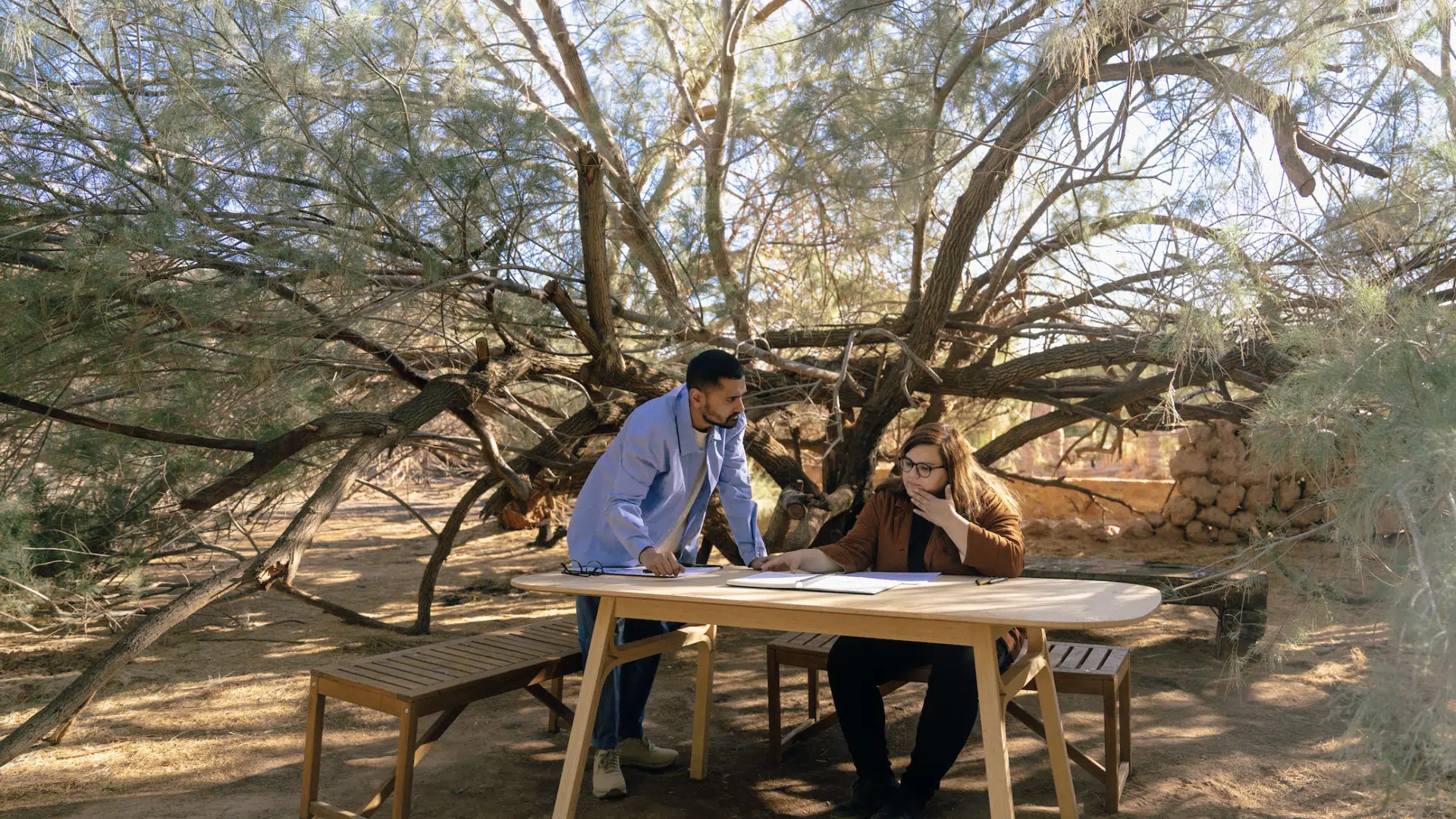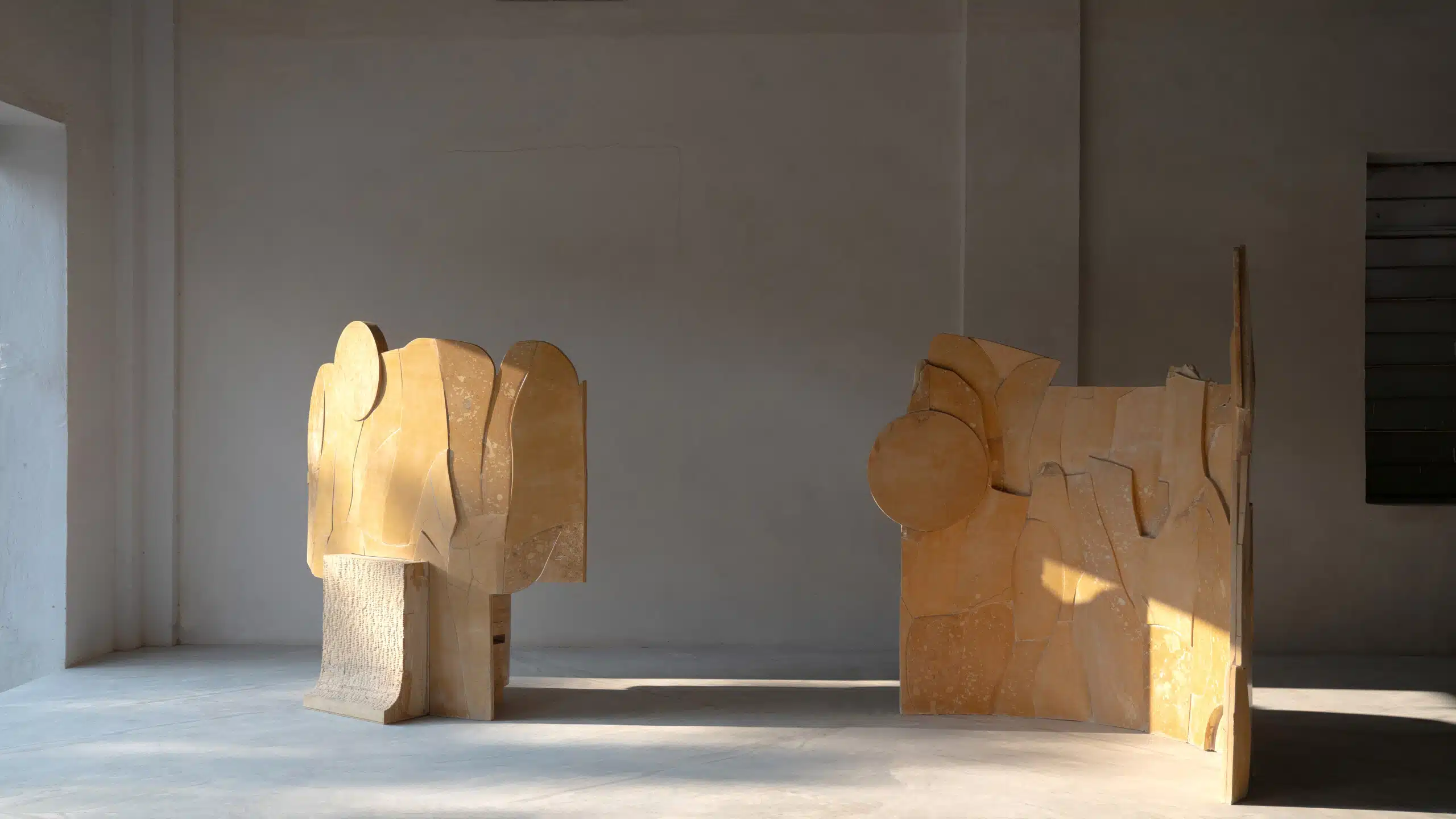Based between the quarries of Makrana in Rajasthan and the state capital of Jaipur, Studio Raw Material breathes new life into a centuries-old architectural and design staple—marble. In their hands, the usually carved and polished rock gives way to its imperfect fragments, showing the many geologic, cultural and technical histories it can contain. In all their work, the Studio places marble into its regional, ecological and community context in Rajasthan— picking offcut pieces to improvise new forms while working with indigenous joinery techniques. Works in the Studio’s most recent series, Khokhar, composed out of reclaimed marble slabs from architectural sites exemplifies their design philosophy and mirrors the landscape of the quarry itself. Each work is a snapshot of Makrana, a seemingly precarious assemblage of fragments yet strongly rooted to the land and its people.
Here we speak to the founders of the studio, Dushyant Bansal and Priyanka Sharma about how Makrana, its various stones, craftspeople and ecology have shaped Studio Raw Material’s unique design philosophy.
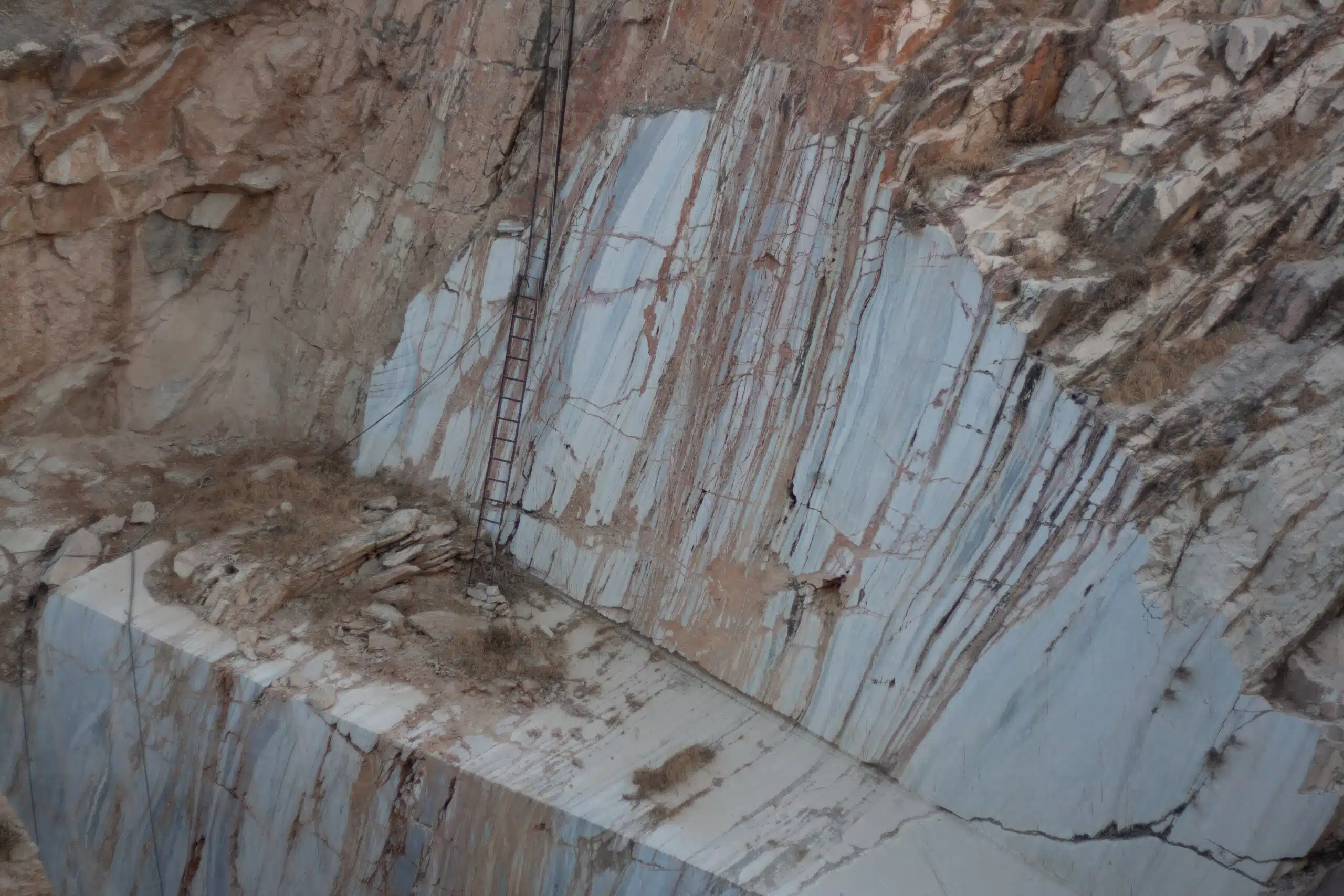
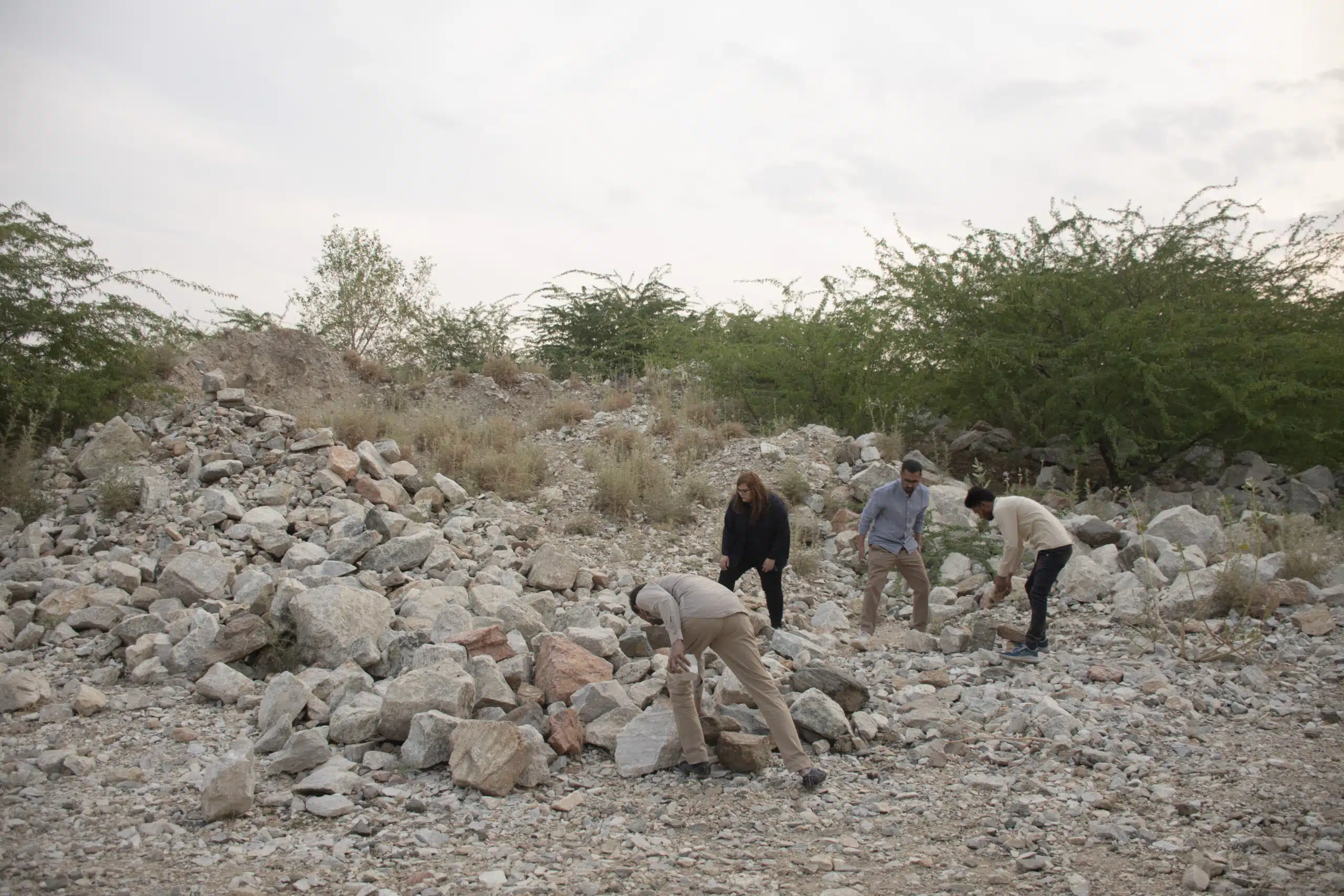
Scenes From The Marble Quarries Of Makrana, Rajasthan. Courtesy Of Studio Raw Material
Let us begin with the material. Can you tell us about Makrana marble, how you came to it and how it has shaped your design philosophy?
We have always been interested in witnessing the journey of materials, especially its source. White marble, like the one from Makrana, Rajasthan is loaded with historic symbolism and used to signal purity, finesse and grandeur. Our interest lay in exploring the material without any such nostalgia and instead, exploring how people from the region relate to it in its native environment.
You cannot escape the huge piles of marble and marble offcuts in Makrana. Each piece delicately and sometimes precariously rests on one another creating the most surreal assemblage. Then there is the white dust in the air. While driving, you have to navigate endless transport trucks carrying large marble blocks, often the size of a room. Even more interesting are the tractors carrying marble scraps to dump yards that appear like shifting landscapes.
That is probably what set the tone for us initially. In contrast to the conventional perception of Makrana marble as an expensive and highly finished material, it represents the earth for us, its minerals and its raw beauty. Our endeavour has been to allude to these qualities by using different colours, complex patterns and blemishes in marble that are native to the region but seldom used.
“We see our work as a way to reimagine materials and redefine notions of value.”
Your work is deeply rooted in the history and geography of your materials. What inspired you about the way the artisans worked here and the quarry itself?
When we started making the initial work as a studio, we struggled with the challenges of being based in a rural area, with the availability of other materials and hardware being limited. This forced us to adapt our process to work in our immediate environment. The change in process also transformed the design language that took into account regional craft practices, local weather conditions, ecology and even the quality of sunlight. Now, we find comfort in the constraints, and use them as a curatorial strategy to dispense with the non-essential facets in any project. We only use materials that are found in the region and work with the local craftspeople. We are constantly learning to interpret the language of vernacular gestures, absorb local practices and ecological vocabulary.
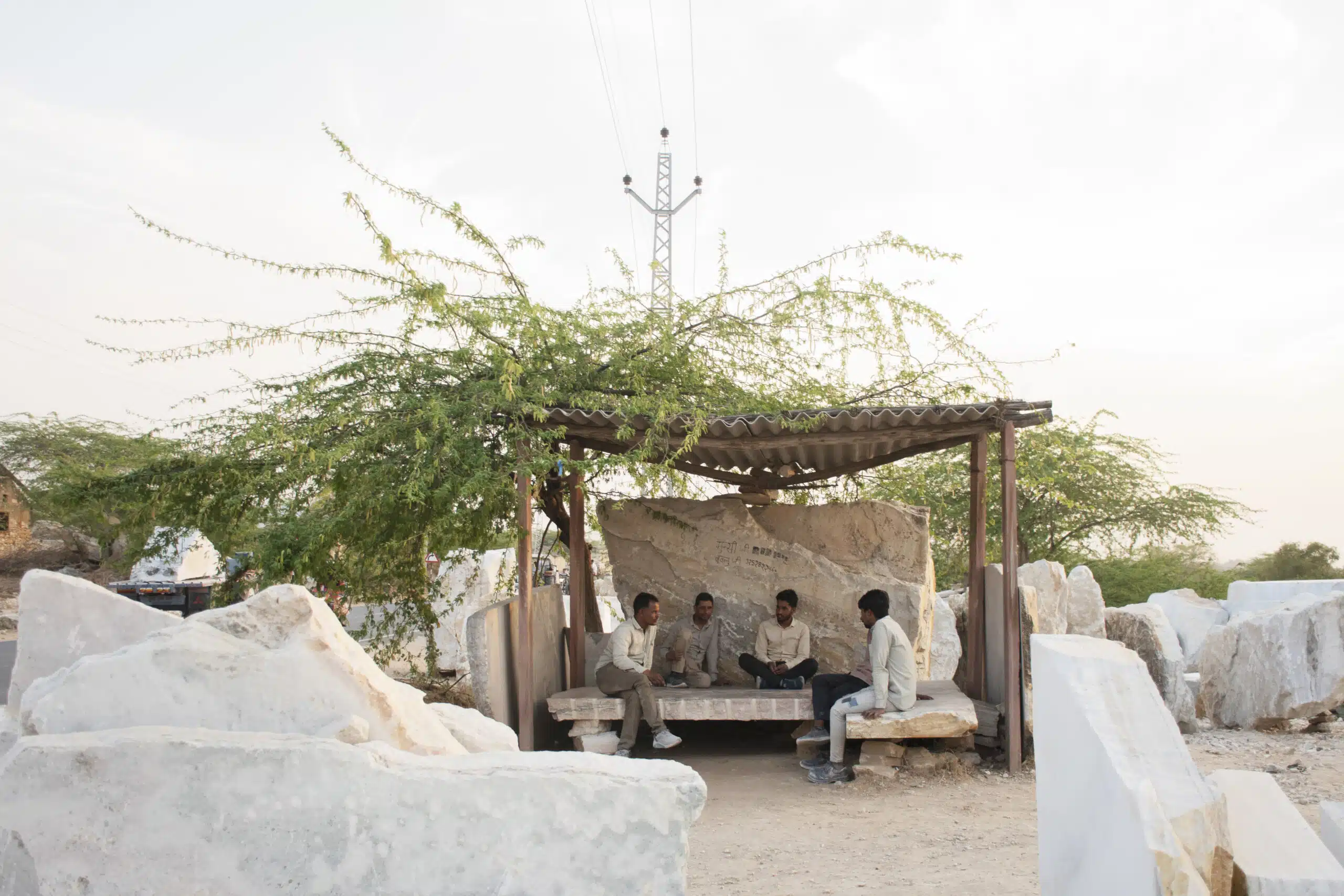
Temporary Structures Around The Makrana Quarries. Courtesy Of Studio Raw Material
One such inspiration comes from the functional temporary structures located around the quarries, such as the sun-shelters that are used as a place of rest. They are spectacular studies in improvisational thinking. Unlike craft, these gestures are not mastered with repetition. Made using local material that is abundantly available, they are free from formal standards, are radically simple, and are urgent responses to basic necessity.
Your design involves a reorientation in the way we see material and process; emphasising the offcut, unfinished and assemblage. Could you tell us more about how you examine accepted ideas of value in your work?
As splinters of cultural importance, fragments provide traces of their past and have helped form a better understanding of the physical world. For us, the concept of wholeness, and the value of fragments and offcuts delve into deep philosophical and aesthetic territories, helping us question how we define completeness and find meaning in what seems incomplete or discarded.
Due to the scale of production and conventional value perceptions of the material, there is a colossal amount of waste generated by the local stone industry. Working with discarded stone materials is a fundamental part of our practice.
We see our work as a way to reimagine materials and redefine notions of value. Besides, when you go to the source of an industry you find an excess of material that is almost free. So it is also a practical choice. Working with constraints really pushes one to explore every aspect of one’s surroundings.
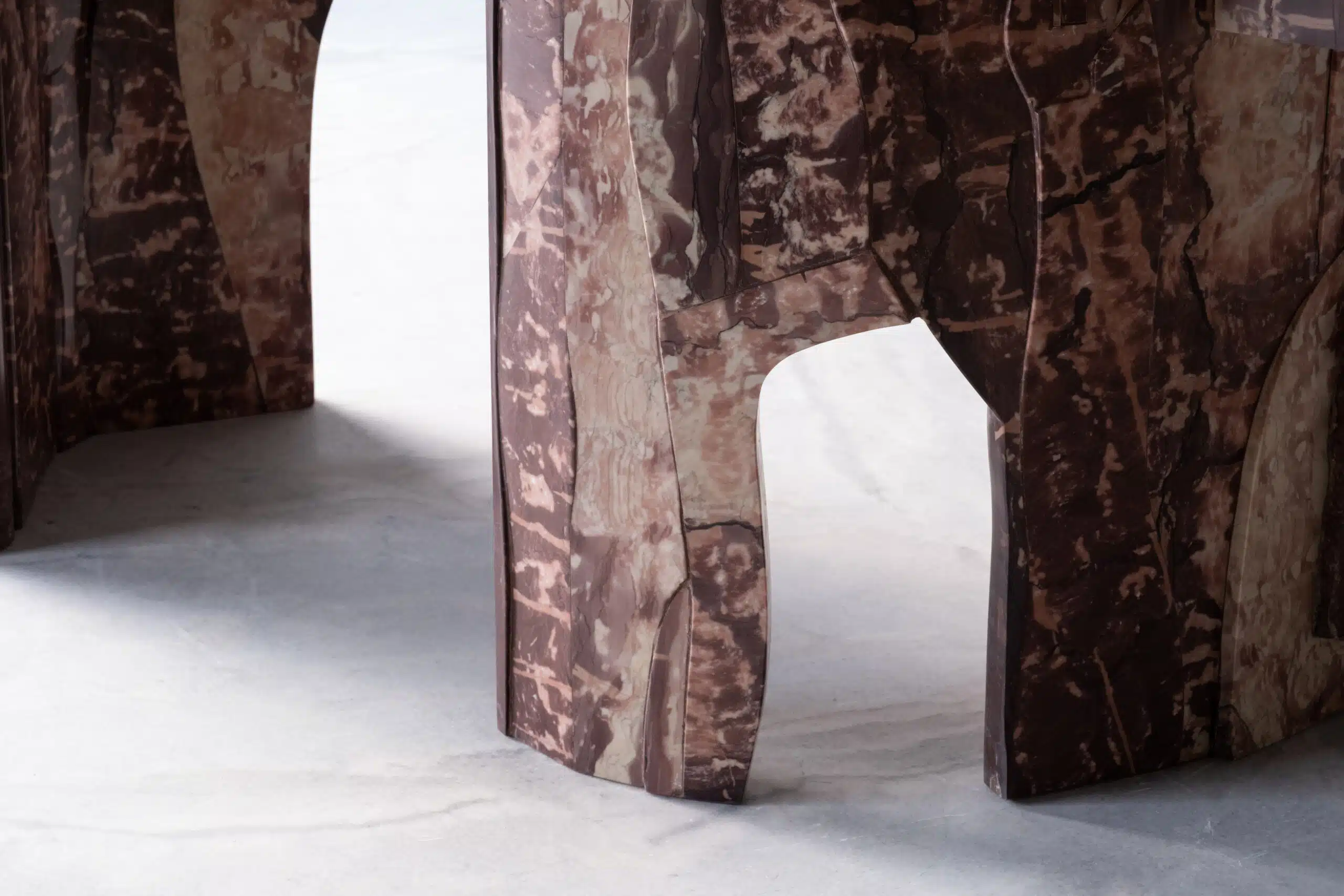
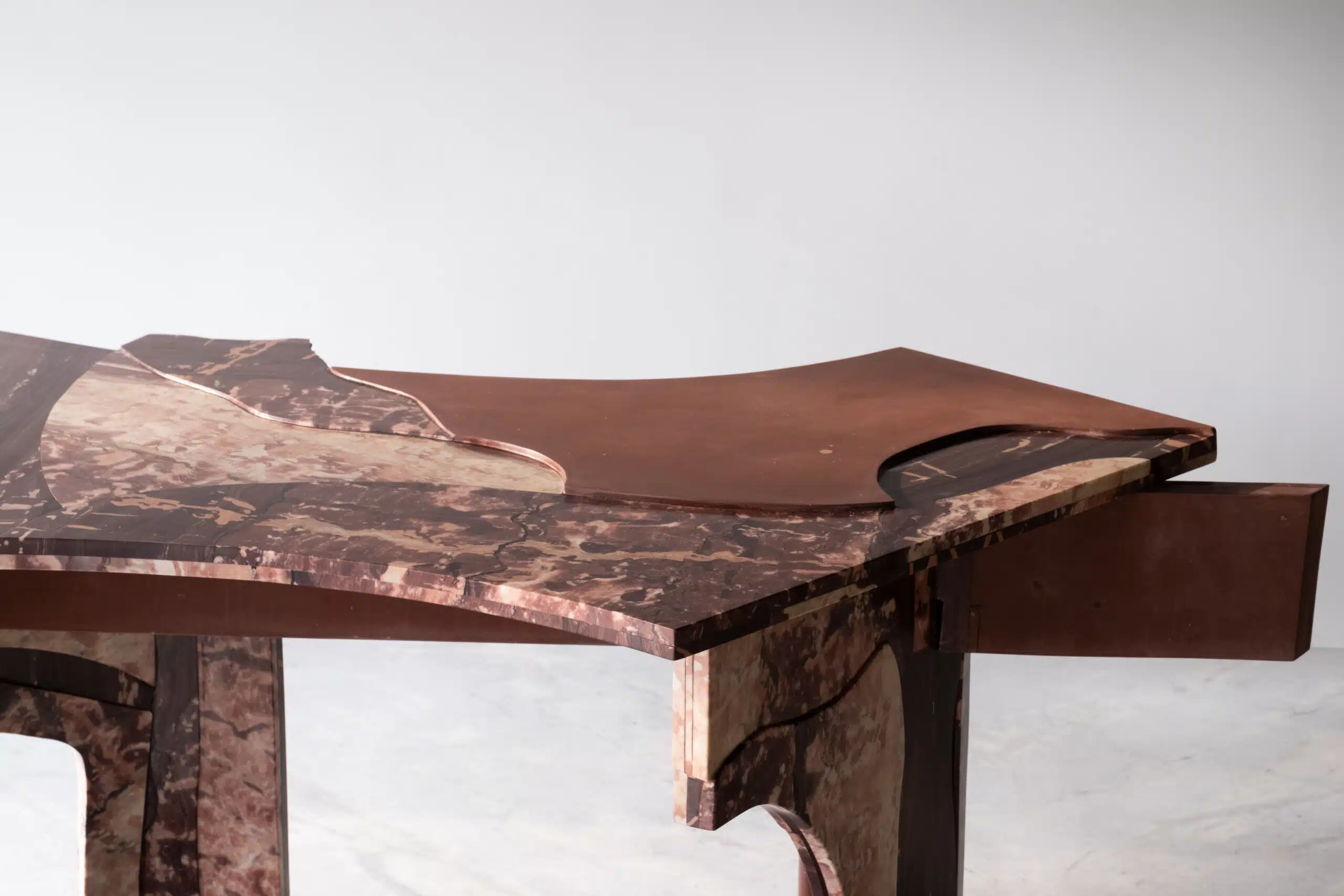
Works And Details From Studio Raw Material’s Khokhar Series. Photos By Eshwarya Grover; Courtesy Studio Raw Material
What is the process of collaboration like with each other and with the team of makers in your studio?
Since we are based in the countryside, we are greatly influenced by its indigenous design practices. We work more intuitively in our studio, through making and sampling ideas. Initially, for our offcut series, we looked at the joinery techniques used in building practices in the region, where the weight of the marble is used to stabilise the non-adhesive based joints. Many of our initial forms were directed by the offcuts we would find. Over time, we have created a vast library, an archive of sorts of all the different materials and colours available to us within close proximity of our studio. In a way our studio in Makrana is a slow laboratory which focuses on collecting, sorting, studying and archiving.
We have had another studio in Jaipur for the last two years, where we make most of our new work. The thinking and making is more immediate here. We are a team of 25 people and all of us are involved in most stages from finding the offcuts right up to the final packaging for transportation. We are constantly researching, documenting and experimenting with various materials and processes. It usually takes us around a year to fully form a new body of work.
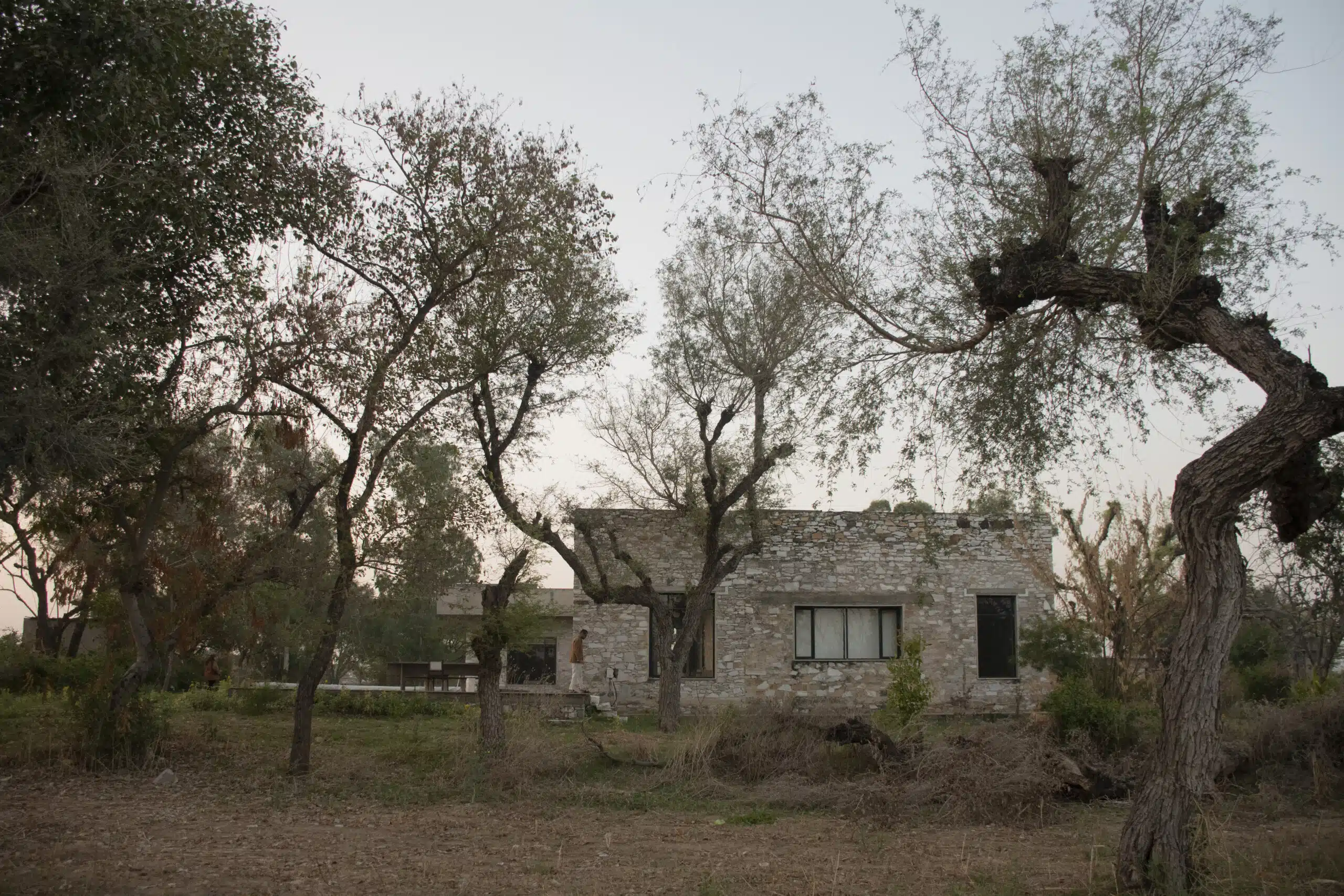
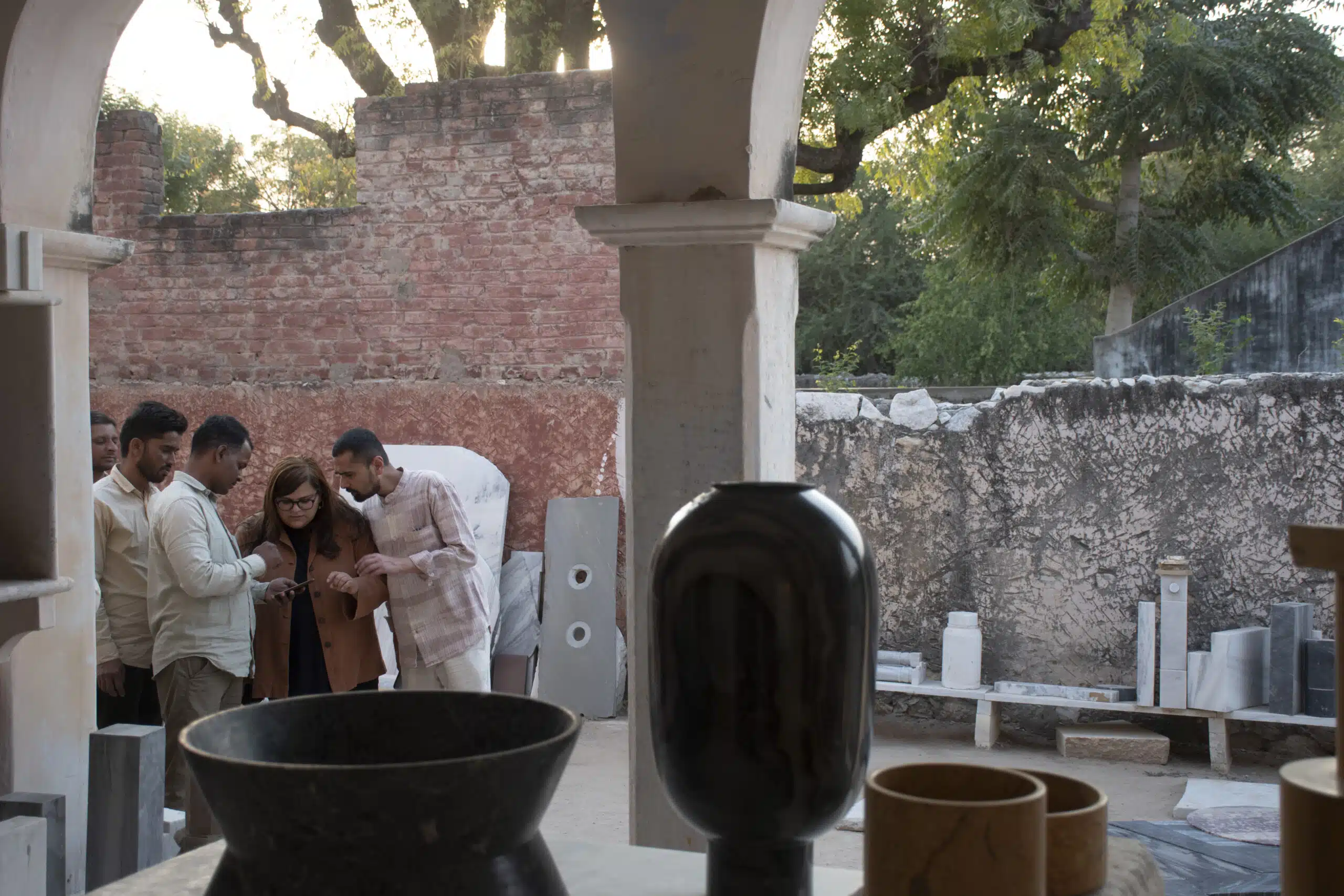
Top: The Design Studio In Markana; Bottom: A Scene From The Workshop In Makrana, Photos By Eshwarya Grover; All Courtesy Of Studio Raw Material
Can you tell us a bit about Thar House, designed and built in Makrana to accommodate pieces from your collection?
Thar House was built in the initial stages of setting up our practice, alongside our first series of works. It gave us an incredible opportunity to observe vernacular architecture techniques in real time that are still practiced in parts of rural India. The learning from these processes formed the foundation for many of our later works. The entire building is unmistakably handmade, as is evident by the imperfect laying of the stone cobbles, the use of fermented mortar and improvised formwork. Built by local workers who were often not trained masons, the final result formulates a visual language that emerges from its irregularities.
We use the house as a collaborative studio space to work with our friends on new projects. When we are making a new body of work, we use the space to visualize the work outside of the workshop. It helps us understand scale and the dialogues that take place between different works more clearly. It also acts as a space to photograph and document our work.
Besides marble, you have also worked with paper. Are there other materials that you are interested in exploring in the future?
Light sculptures are a new series of works by our studio. While working with stone, we wanted to explore other materials within our regional landscape. Paper seemed like a strangely perfect progression, as a craft material indigenous to this region while also sitting at the opposite end to stone in its materiality.
Although material is the primary medium to communicate our work, we are also very interested in exploring regional context to build a body of work. As an extension to our work with paper, we would like to explore other plant fibres from this region.
Dushyant Bansal and Priyanka Sharma founded Studio Raw Material in Rajasthan in 2017. The studio will be showing works from its Khokhar series at India Art Fair 2025.


